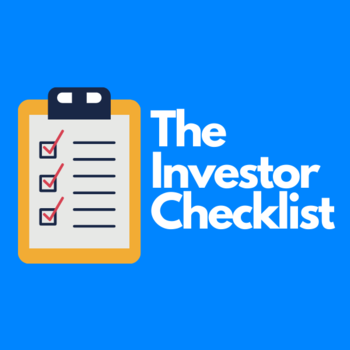Equity Crowdfunding – The Investor Checklist
22 November 2021 @ 12:00am Equity Crowdfunding Investors

Written by Cassandra Diamantis, Marketing Manager at OnMarket.
The Equity Crowdfunding space has taken off – both in Australia and internationally (U.S, UK). With so many small businesses opting to raise capital via an equity crowdfunding campaign, it can be difficult for investors to choose what companies best aligns with their interests and values. Fear not, OnMarket has you covered!
We’ve put together a checklist for you to complete prior to participating in a raise. The below checklist will assist you in thoroughly comprehending the market offer and investment opportunity at hand.
Point of Difference
Point of difference, or unique selling point, is crucial to understand as it sets apart the company raising capital to its competitors (if any). You must wholistically understand the company’s unique value proposition to then understand the magnitude of the market opportunity. To aid your research on the point of difference, ask yourself the below questions:
- How does this product or service solve the industry issue identified by the company?
- How does their business model differ from existing companies and competitors?
- How will they attract new consumers, and retain them?
- What is their revenue model?
Market Opportunity
The market opportunity refers to the industry the company is looking to enter, and how their unique point of difference fills a gap in the market. Through understanding the point of difference you’ll be more equipped to analyse the existing market and the extent of the market opportunity, including the growth potential and scalability. Here are a few prompting questions to assist you in in deepening your market knowledge:
- What is the size of the total addressable market (TAM)?
- How difficult is the barrier to entry?
- What is the annual growth of this market?
- Who are the key players in this market? How do they differ?
Traction
Traction refers to the company’s current position, including revenue, users, partnerships, etc. Many companies use equity crowdfunding for growth capital, so it not uncommon for a company raising funds to have minimal traction. However, it is always beneficial to review their traction to gauge the business’ potential in terms of existing engagement, and potential engagement growth. Here’s what you should find out before investing:
- Are they pre-revenue? Revenue-generating?
- Does their website or business venture engage visitors? Who? How?
- Have they pursued a pilot site? If so, how did it go?
- How long has the idea been in development?
- How much has been invested in the company to date?
Management Team
When you invest in an Australian start-up, you’re not only investing in the business model -you’re also investing in the founders, CEO, and advisory board. There’s no I in team, right?! For this reason, it’s crucial to complete your homework to better acknowledge the managerial experience and leadership skills of team behind the great idea. Also, don’t forget to look at their connections and the wider network they can tap into! Use the below questions as a guideline to complete your homework:
- Have any members of the team previously built and scaled a company?
- Have they ever assisted in a company’s exit?
- How many of them have had managerial experience?
- What are their skills and how do they complete each other?
- Could I trust them?
Investment Horizon
Investing in an ECF raise is considered a long-term investment, however, it’s still important to review management’s exit strategy. Although the exit plan is not cement, it provides insight into the company’s thinking and investment horizon. Here’s what you need to look for in the offer document or landing page to piece together their exit plan:
- What is management’s exit strategy? Trade Sale? Public Listing?
- What timeline are they working towards? Is it feasible?
- What is the road map put in place to achieve their timeline?
In summary, there is always an element of risk when investing in an equity crowdfunding raise, that’s just the status quo when investing in the start-up space! Although there is no cement promise, the potential capital gains of an ECF raise can heavily outweigh those of investing in typical stock markets – which is why so many retail and sophisticated investors are joining the ECF community!
Using the above guiding questions and key elements, you’ll be able to better piece together the business opportunity and analyse the market offer. Check out some of the latest investment opportunities at OnMarket to put your checklist in action!